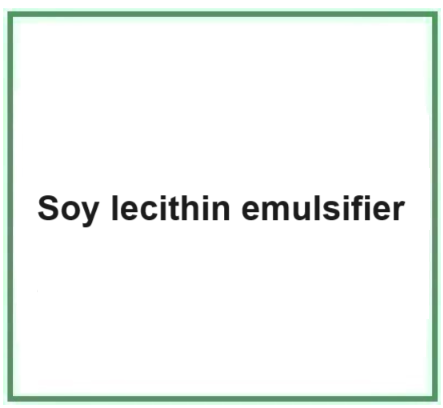![]() Soy lecithin emulsifier
Soy lecithin emulsifier
Rating : 6
| Evaluation | N. Experts | Evaluation | N. Experts |
|---|---|---|---|
| 1 | 6 | ||
| 2 | 7 | ||
| 3 | 8 | ||
| 4 | 9 | ||
| 5 | 10 |
Cons:
Specific allergy (1)10 pts from Flight444
| Sign up to vote this object, vote his reviews and to contribute to Tiiips.Evaluate | Where is this found? |
| "Descrizione" about Soy lecithin emulsifier Review Consensus 10 by Flight444 (3324 pt) | 2023-Oct-01 21:34 |
| Read the full Tiiip | (Send your comment) |
Soy lecithin emulsifier refers to a mixture of phospholipids derived from the processing of soybeans. The name "soy lecithin" provides information about the source and nature of the compound:
- "Soy" refers to the source of lecithin, which is soy. Soybeans are a type of legume native to East Asia and are widely cultivated for their edible seed, which has numerous uses.
- "lecithin" is a generic term that describes any group of yellowish-brownish fatty substances present in animal and plant tissues. Lecithins are amphiphilic, meaning that they attract both water and fat and are used to smooth food textures, dissolve powders, homogenize liquid mixtures and repel sticky materials.
Thus, soy lecithin is a complex mixture of phospholipids, glycolipids, triglycerides and other compounds, which is extracted from soybeans.
Soy lecithin is composed of
- water
- carbohydrates
- triglycerides
- phospholipids
- glycolipids
- traces of sterols
- fatty acids
- carotenoids
The synthesis process takes place in different steps:
- Soybean oil extraction. The first step is to extract the oil from soybeans. This is typically done with a solvent such as hexane. Soybeans are cleaned, cracked and then rolled into flakes. The flakes are then immersed in the solvent, which dissolves the soybean oil. The solvent is then removed, leaving the crude soybean oil behind.
- Degumming. Crude soybean oil contains a variety of impurities, including phospholipids, which make up lecithin. The oil is heated and mixed with water or steam, which causes the phospholipids to hydrate and form a gum. This rubber is then separated from the oil.
- Drying and further processing. Wet rubber contains lecithin, but also contains water and other impurities, so it is dried to remove water and can also be bleached or deodorized to remove any remaining impurities or odors. The result is a dry, dusty substance that is mainly lecithin.
- Optional modification. Depending on the desired final product, lecithin may undergo further modification. For example, it can be fractionated to separate different types of phospholipids, or it can be hydrolyzed to change its emulsifying properties.

It appears in the form of a yellowish powder.
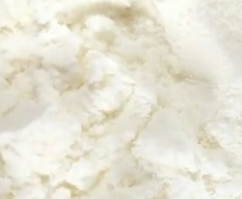
What it is used for and where
Soy lecithin is commonly used as an emulsifier in a wide range of foods and also has applications in the pharmaceutical and cosmetic industries.
Food
Soy lecithin is a food additive with the function of an emulsifying and stabilising agent, listed as E322 on the European food additives list.
Its food applications are varied: from chocolate to sweets from the bakery to generic foods.

Here is a list of the main applications:
- Instant or powdered beverages
- Soups, sauces
- Cheeses
- Meat and stuffed products
- Ground Meat Products and Fillings
Because of this wide availability, soy lecithin can be used as a substitute for rapeseed lecithin and sunflower lecithin.
Medical
Soy Lecithin has many healthy uses in the food and medical sectors.
In the food sector it is an emulsifier.
In medicine it has been found to be beneficial for human health:
- hypolipidemic
- liver function support
- control of blood levels of cholesterol and triglycerides (1)
- reduction of harmful LDL cholesterol (2)
- memory improvement (animal experiment) (3)
Cosmetics
- Antistatic agent. Static electricity build-up has a direct influence on products and causes electrostatic adsorption. The antistatic ingredient reduces static build-up and surface resistivity on the surface of the skin and hair.
- Skin conditioning agent. It is the mainstay of topical skin treatment as it has the function of restoring, increasing or improving skin tolerance to external factors, including melanocyte tolerance. The most important function of the conditioning agent is to prevent skin dehydration, but the subject is rather complex and involves emollients and humectants that can be added in the formulation.
- Skin conditioning agent - Emollient. Emollients have the characteristic of enhancing the skin barrier through a source of exogenous lipids that adhere to the skin, improving barrier properties by filling gaps in intercorneocyte clusters to improve hydration while protecting against inflammation. In practice, they have the ability to create a barrier that prevents transepidermal water loss. Emollients are described as degreasing or refreshing additives that improve the lipid content of the upper layers of the skin by preventing degreasing and drying of the skin. The problem with emollients is that many have a strong lipophilic character and are identified as occlusive ingredients; they are oily and fatty materials that remain on the skin surface and reduce transepidermal water loss. In cosmetics, emollients and moisturisers are often considered synonymous with humectants and occlusives.
- Surfactant - Emulsifying agent. Emulsions are thermodynamically unstable and are used to soothe or soften the skin and emulsify, so they need a specific, stabilising ingredient. This ingredient forms a film, lowers the surface tension and makes two immiscible liquids miscible. A very important factor affecting the stability of the emulsion is the amount of the emulsifying agent. Emulsifiers have the property of reducing the oil/water or water/oil interfacial tension, improving the stability of the emulsion and also directly influencing the stability, sensory properties and surface tension of sunscreens by modulating the filmometric performance.
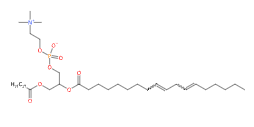 | 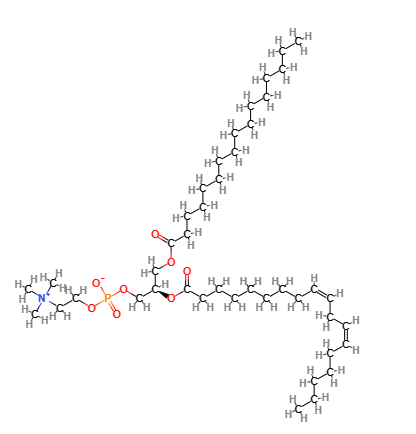 |
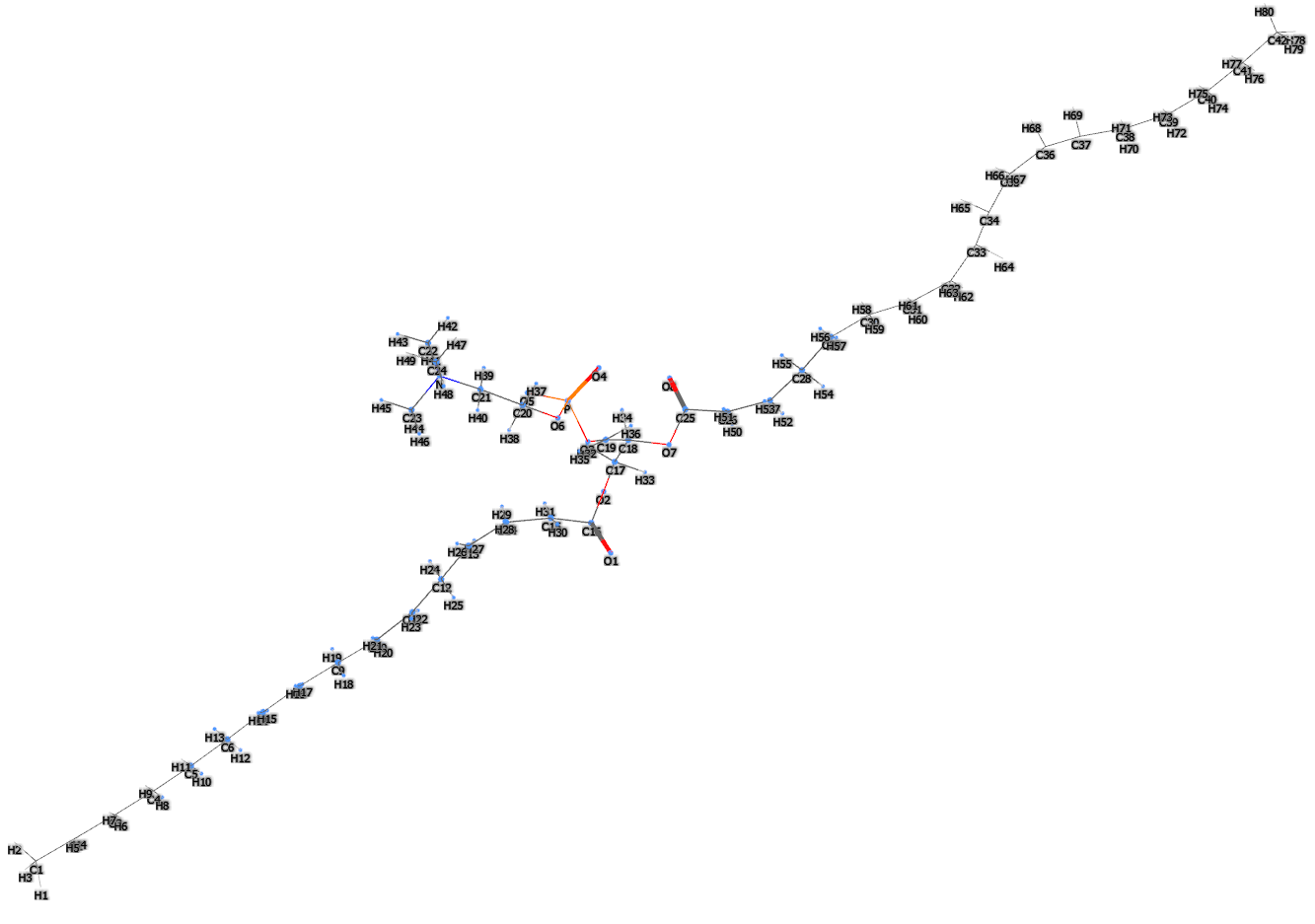 | 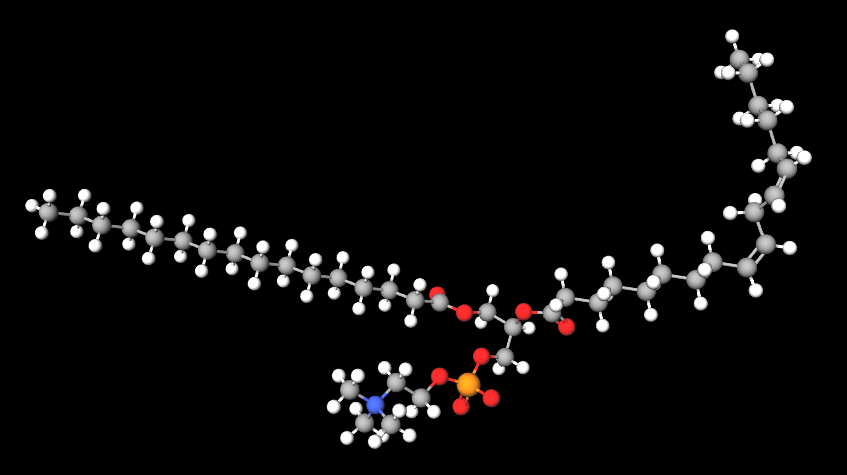 |
- Molecular Formula C42H80NO8P
- Molecular Weight 758.1 g/mol
- CAS 8002-43-5
- UNII 6UCA7I41S8
- EC Number 232-307-2
The most relevant studies on this ingredient have been selected with a summary of their contents:
References________________________________________________________________________
(1) Ipatova OM, Prozorovskaia NN, Torkhovskaia TI, Baranova VS, Guseva DA. Biologicheskaia aktivnost' soevykh fosfolipidov [Biological effects of the soybean phospholipids]. Biomed Khim. 2004 Sep-Oct;50(5):436-50. Russian.
Abstract. Soyabean phospholipids, particularly commercial lecithin, are now widely used as biological active food additives. Mechanisms of their activities are based mainly on their similarity with ow phospholipids of biomembranes and blood lipoproteins. The similarity allows the inclusion of plant phospholipids into these structures and promotes prevention of number of pathological processes. Soybean phospholipids have a wide range of biochemical and physical effects. Lecithin complex is the source of easily accessible linoleic acid, choline and inositol. Lecithin plays a notable role as synergist for antioxidants also. The proven health benefits which can be achieved by taking soybean phospholipids include lipid-lowering; control of blood levels of cholesterol and triglyceride, stabilisation of the membrane functions, supporting the hepatic functions. Structure, some physico-chemical properties and metabolism of phospholipids, and molecular mechanisms of their prophylactic effects are briefly reviewed.
(2) Spilburg CA, Goldberg AC, McGill JB, Stenson WF, Racette SB, Bateman J, McPherson TB, Ostlund RE Jr. Fat-free foods supplemented with soy stanol-lecithin powder reduce cholesterol absorption and LDL cholesterol. J Am Diet Assoc. 2003 May;103(5):577-81. doi: 10.1053/jada.2003.50110.
Abstract. Objective: The objective of this work was to show that fat-free, lecithin-formulated soy stanols lower cholesterol absorption and serum LDL cholesterol.... Results: Stanol-lecithin reduced cholesterol absorption by 32.1% (P=.0045, n=10) and by 38.2% (P=.0022, n=11) when delivered in a lemonade-flavored beverage and in egg whites, respectively. Reduction in cholesterol absorption was strongly related to the initial level of absorbed cholesterol tracer in serum (r(s)=-0.739). Stanol-lecithin given in a beverage reduced total serum cholesterol by 10.1% (P=.0019, n=24) and LDL cholesterol by 14.3% (P=.0016, n=24). Applications/conclusions: Powdered soy stanol-lecithin lowers cholesterol absorption and LDL cholesterol when consumed in fat-free foods.
(3) Suzuki S, Yamatoya H, Sakai M, Kataoka A, Furushiro M, Kudo S. Oral administration of soybean lecithin transphosphatidylated phosphatidylserine improves memory impairment in aged rats. J Nutr. 2001 Nov;131(11):2951-6. doi: 10.1093/jn/131.11.2951.
Abstract. Soybean lecithin transphosphatidylated phosphatidylserine (SB-tPS) was prepared from soybean lecithin and L-serine by a transphosphatidylation reaction, and its effect on age-related memory impairment was evaluated in rats by the Morris water maze test. Continuous oral administration of SB-tPS (60 mg x kg(-1) x d(-1) for 60 d) to male aged rats (24-25 mo) significantly improved performance in the water maze escape test (P < 0.01 vs. control aged rats) similar to bovine brain cortex-derived phosphatidylserine, which restores cognitive function in patients with senile dementia. SB-tPS also increased acetylcholine release and the Na(+), K(+)-ATPase activity of the synaptosomes prepared from these aged rats to the level in young rats. The nootropic actions of SB-tPS in the present study can be partly explained by the changes in these biochemical activities.
| Sign up to vote this object, vote his reviews and to contribute to Tiiips.EvaluateClose | (0 comments) |
Read other Tiiips about this object in __Italiano (1)
Component type: Chemical Main substances: Last update: 2023-10-01 21:29:03 | Chemical Risk: |


